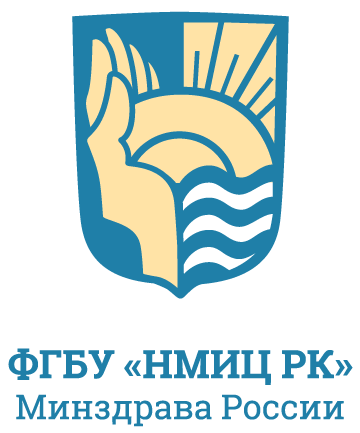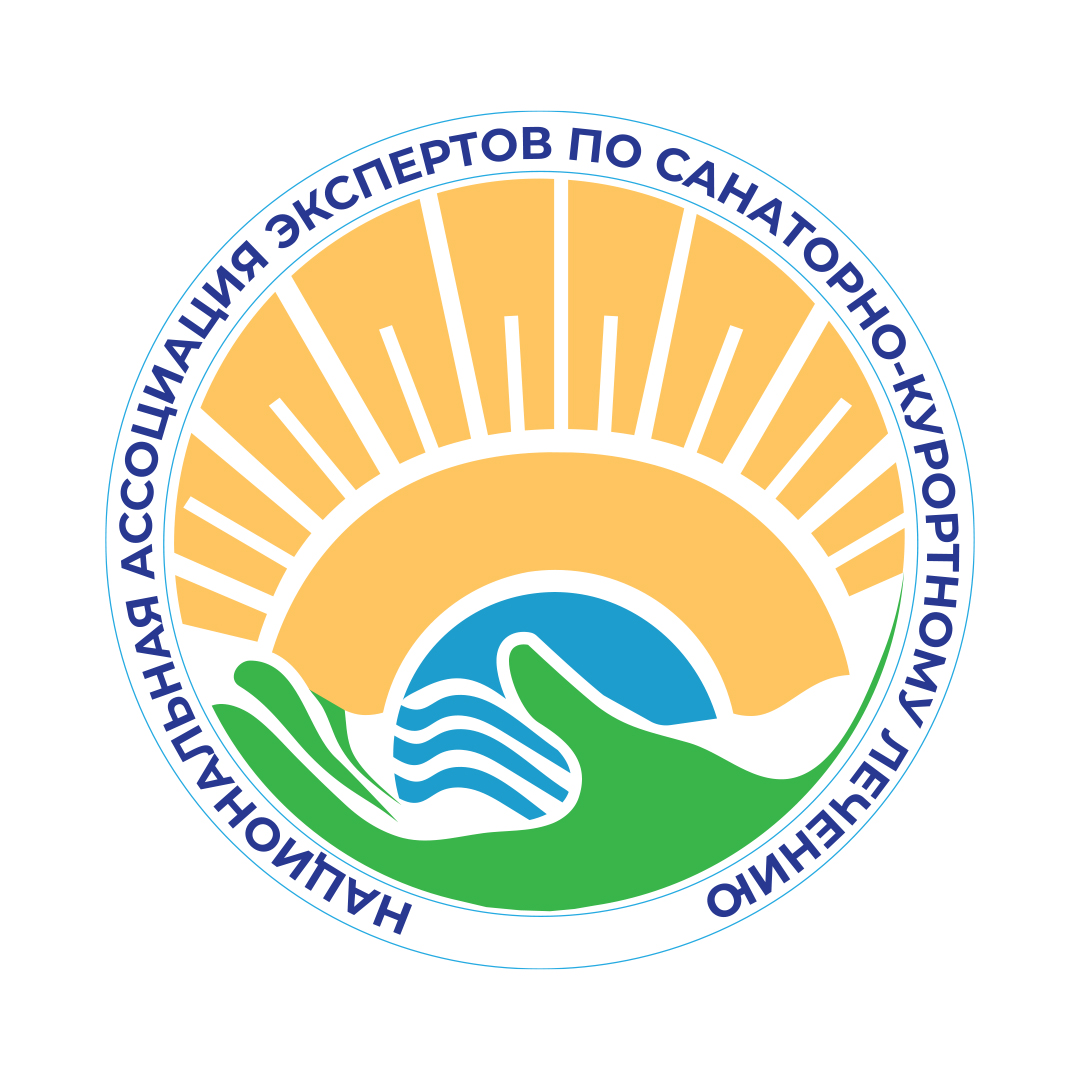Выпуск 23-4, 2024
Обзорная статья
Реабилитация при миелодисплазии у детей: обзор
1,2 ![]() Некрасова А.М.,2
Некрасова А.М.,2 ![]() Бодрова Р.А.,2
Бодрова Р.А.,2 ![]() Нефедьева Д.Л.
Нефедьева Д.Л.
1ООО «Казанский институт травматологии и ортопедии», Казань, Россия
2Казанская государственная медицинская академия — филиал ФГБОУ ДПО РМАНПО Министерства здравоохранения
Российской Федерации, Казань, Россия
РЕЗЮМЕ
ВВЕДЕНИЕ. Ежегодно в России рождается 1,5 тыс. детей с миелодисплазией (МД). Для улучшения качества жизни большинство из них нуждается в пожизненном медицинском наблюдении и реабилитации. Тема медицинской реабилитации при МД у детей освещена скудно.
ЦЕЛЬ. Провести поиск и анализ литературы по реабилитации детей с МД для получения представления об эффективности применяемых методик за рубежом и в Российской Федерации.
МАТЕРИАЛЫ И МЕТОДЫ. Проведен сбор и анализ публикаций из базы данных PubMed и eLibrary, вышедших c 2014 по 2024 г., были включены в обзор также более ранние фундаментальные работы относительно вторичных нарушений при МД. Всего было проанализировано 512 публикаций в PubMed и 1096 публикаций в eLibrary, из них 584 были уникальными. Были включены обзоры (в том числе систематические).
РЕЗУЛЬТАТЫ И ОБСУЖДЕНИЕ. Реабилитация при МД у детей носит мультидисциплинарный характер, нарушение структуры нервной системы влечет за собой уже внутриутробно формирование деформаций опорно-двигательной системы, сочетанных изменений функционирования нижних мочевыделительных путей и кишечника. Известно, что начатая с раннего возраста реабилитация помогает освоить своевременно двигательные навыки, способствует профилактике метаболического синдрома, контрактур, пролежней, уродинамических нарушений и запоров. Существуют разные подходы относительно интенсивности физических нагрузок в течения дня и недели, придерживаясь рекомендации Всемирной организации здравоохранения (ВОЗ), детям необходимо заниматься физическими упражнениями более 60 минут в день. Физические упражнения необходимо проводить с позиции концепции нейропластичности и усиливать воздействием магнитной стимуляции, низкоинтенсивным лазером, электромиостимуляцией, вибрационной терапией. Возможно, будет эффективно применение иглорефлексотерапии и массажа. Кроме того, с раннего возраста важно включать в медицинскую реабилитацию урологическую и ортопедическую помощь.
ЗАКЛЮЧЕНИЕ. В связи с высокой инвалидизацией стоит вопрос об эффективных методиках улучшения реабилитационного потенциала, повышения уровня жизнедеятельности. Среди описанных методик выделены физиотерапия, включающая лечебные упражнения, магнитная стимуляция, низкоинтенсивная лазерная терапия, электромиостимуляция, эрготерапия. Необходимо продолжать изучать эффективность применение различных факторов физического воздействия у детей с МД.
КЛЮЧЕВЫЕ СЛОВА: spina bifida, менингомиелоцеле, реабилитация, физиотерапия, детская реабилитация
ИСТОЧНИК ФИНАНСИРОВАНИЯ: Данное исследование не было поддержано никакими внешними источниками финансирования.
КОНФЛИКТ ИНТЕРЕСОВ: Авторы декларируют отсутствие явных и потенциальных конфликтов интересов, связанных с публикацией настоящей статьи.
ДЛЯ ЦИТИРОВАНИЯ:
Некрасова А.М., Бодрова Р.А., Нефедьева Д.Л. Реабилитация при миелодисплазии у детей: обзор. Вестник восстановительной медицины. 2024; 23(4):83-91. https://doi.org/10.38025/2078-1962-2024-23-4-83-91 [Nekrasova A.M., Bodrova R.A., Nefedeva D.L. Myelodysplasia Rehabilitation in Children: a Review. Bulletin of Rehabilitation Medicine. 2024; 23(4):83-91. https://doi.org/10.38025/2078-1962-2024-23-4-83-91 (In Russ.).]
ДЛЯ КОРРЕСПОНДЕНЦИИ:
Некрасова Анна Михайловна, E-mail: kafedra-reabil-kgma@mail.ru
Список литературы:
- Avagliano L., Massa V., George T.M., et al. Overview on neural tube defects: From development to physical characteristics. Birth Defects Res. 2019; 111(19): 1455–1467. https://doi.org/10.1002/bdr2.1380
- Sato K. Why is folate effective in preventing neural tube closure defects? Med Hypotheses. 2020; 134: 109429. https://doi.org/10.1016/j.mehy.2019.109429
- Ambartsumyan L., Rodriguez L. Bowel management in children with spina bifida. J Pediatr Rehabil Med. 2018; 11(4): 293–301. https://doi.org/10.3233/PRM-170533
- Harris C.J., Lemack G.E. Neurourologic dysfunction: evaluation, surveillance and therapy. Curr Opin Urol. 2016; 26(4): 290–294. https://doi.org/10.1097/MOU.0000000000000290
- Phillips L.A., Burton J.M., Evans S.H. Spina Bifida Management. Curr Probl Pediatr Adolesc Health Care. 2017; 47(7): 173–177. https://doi.org/10.1016/j.cppeds.2017.06.007
- Caminiti C., Saure C., Weglinski J., et al. Body composition and energy expenditure in a population of children and adolescents with myelomeningocele. Arch Argent Pediatr. 2018; 116(1): e8–e13. https://doi.org/10.5546/aap.2018.eng.e8
- Van Speybroeck A., Mueske N.M., Mittelman S.D., et al. Fasting serum blood measures of bone and lipid metabolism in children with myelomeningocele for early detection of cardiovascular and bone fragility risk factors. J Spinal Cord Med. 2017; 40(2): 193–200. https://doi.org/10.1080/10790268.2015.1101983
- Davis M.C., Hopson B.D., Blount J.P., et al. Predictors of permanent disability among adults with spinal dysraphism. J Neurosurg Spine. 2017; 27(2): 169–177. https://doi.org/10.3171/2017.1.SPINE161044
- Moher D., Liberati A., Tetzlaff J., et al. Preferred Reporting Items for Systematic Reviews and Meta-Analyses: the PRISMA statement. PLoS Med. 2009; 6(7): e1000097. https://doi.org/10.1371/journal.pmed.1000097
- Davis W.A., Zigler C.K., Crytzer T.M., et al. Factors Associated with Ambulation in Myelomeningocele: A Longitudinal Study from the National Spina Bifida Patient Registry. Am J Phys Med Rehabil. 2020; 99(7): 586–594. https://doi.org/10.1097/PHM.0000000000001406
- Bartonek Å., Eriksson M. Physical function and activity, pain, and health status in adults with myelomeningocele after orthotic management from childhood: a descriptive study. MC Musculoskelet Disord. 2023; 24(1): 545. https://doi.org/10.1186/s12891-023-06673-7
- McPherson A.C., Swift J.A., Peters M., et al. Communicating about obesity and weight-related topics with children with a physical disability and their families: spina bifida as an example. Disabil Rehabil. 2017; 39(8): 791–797. https://doi.org/10.3109/09638288.2016.1161845
- Smythe T., Freeze L., Cuthel A., et al. Provision of rehabilitation for congenital conditions. Bull World Health Organ. 2022; 100(11): 717–725. https://doi.org/10.2471/BLT.22.288147
- Lee D.K., Sansom J.K. Early Treadmill Practice in Infants Born with Myelomeningocele: A Pilot Study. Pediatr Phys Ther. 2019; 31(1): 68–75. https://doi.org/10.1097/PEP.0000000000000554
- Heiskanen V., Hamblin M.R. Photobiomodulation: lasers vs. light emitting diodes? Photochem Photobiol Sci. 2018; 17(8): 1003–1017. https://doi.org/10.1039/c8pp90049c
- Paula A.A., Nicolau R.A., Lima Mde O., et al. Low-intensity laser therapy effect on the recovery of traumatic spinal cord injury. Lasers Med Sci. 2014; 29(6): 1849–1859. https://doi.org/10.1007/s10103-014-1586-4
- Veronez S., Assis L., Del Campo P., et al. Effects of different fluences of low-level laser therapy in an experimental model of spinal cord injury in rats. Lasers Med Sci. 2017; 32(2): 343–349. https://doi.org/10.1007/s10103-016-2120-7
- da Silva F.C., Silva T., Gomes A.O., et al. Sensory and motor responses after photobiomodulation associated with physiotherapy in patients with incomplete spinal cord injury: clinical, randomized trial. Lasers Med Sci. 2020; 35(8): 1751–1758. https://doi.org/10.1007/s10103-020-02968-6
- Mosca R.C., Ong A.A., Albasha O., et al. Photobiomodulation Therapy for Wound Care: A Potent, Noninvasive, Photoceutical Approach. Advances in Skin & Wound Care. 2019; 32(4): 157–167. https://doi.org/10.1097/01.ASW.0000553600.97572.d2
- Hernández-Bule M.L., Naharro-Rodríguez J., Bacci S., et al. Unlocking the Power of Light on the Skin: A Comprehensive Review on Photobiomodulation. International journal of molecular sciences. 2024; 25(8): 4483. https://doi.org/10.3390/ijms25084483
- Szopa A., Domagalska-Szopa M., Siwiec A., Kwiecień-Czerwieniec I. Effects of Whole-Body Vibration-Assisted Training on Lower Limb Blood Flow in Children with Myelomeningocele. Front Bioeng Biotechnol. 2021; 9: 601747. https://doi.org/10.3389/fbioe.2021.601747
- Aizawa C.Y., Morales M.P., Lundberg C., et al. Conventional physical therapy and physical therapy based on reflex stimulation showed similar results in children with myelomeningocele. Arq Neuropsiquiatr. 2017; 75(3): 160–166. https://doi.org/10.1590/0004-282X20170009
- Saleem G.T., Crasta J.E., Slomine B.S., et al. Transcranial Direct Current Stimulation in Pediatric Motor Disorders: A Systematic Review and Meta-analysis. Arch Phys Med Rehabil. 2019; 100(4): 724–738. https://doi.org/10.1016/j.apmr.2018.10.011
- Бородулина И.В., Рачин А.П., Бадалов Н.Г., Гуща А.О. Периферическая ритмическая магнитная стимуляция при нейрогенных расстройствах мочеиспускания: обзор литературы и результаты клинического исследования. Нервно-мышечные болезни. 2017; 7 (2): 54–66. https://doi.org/10.17650/2222-8721-2017-7-2-54-66 [Borodulina I.V., Rachin A.P., Badalov N.G., Goushcha A.O. Peripheral repetitive magnetic stimulation for the treatment of neurogenic urinary disorders: literature review and investigational study. Neuromuscular Diseases. 2017; 7(2): 54–66. https://doi.org/10.17650/2222-8721-2017-7-2-54-66 (In Russ.).]
- Li L.X., Zhang M.M., Zhang Y., He J. Acupuncture for cerebral palsy: A meta-analysis of randomized controlled trials. Neural Regen Res. 2018; 13(6): 1107–1117. https://doi.org/10.4103/1673-5374.233455
- Martins E., Cordovil R., Oliveira R., et al. Efficacy of suit therapy on functioning in children and adolescents with cerebral palsy: a systematic review and meta-analysis. Dev Med Child Neurol. 2016; 58(4): 348–360. https://doi.org/10.1111/dmcn.12988
- Almeida K.M., Fonseca S.T., Figueiredo P.R.P., et al. Effects of interventions with therapeutic suits (clothing) on impairments and functional limitations of children with cerebral palsy: a systematic review. Braz J Phys Ther. 2017; 21(5): 307–320. https://doi.org/10.1016/j.bjpt.2017.06.009
- Иванов С.В., Кенис В.М., Прокопенко Т.Н., и др. Переломы нижних конечностей у детей с последствиями спинномозговых грыж. Ортопедия, травматология и восстановительная хирургия детского возраста. 2018; 6 (3): 25–31. https://doi.org/10.17816/pToRS6325-31 [Ivanov S.V., Kenis V.M., Prokopenko T.N., et al. Fractures of lower limbs in children with spina bifida. Pediatric Traumatology, Orthopaedics and Reconstructive Surgery. 2018; 6(3): 25–31. https://doi.org/10.17816/pToRS6325-31 (In Russ.).]
- Gigante C., Borgo A., Corradin M. Correction of lower limb deformities in children with renal osteodystrophy by guided growth technique. J Child Orthop. 2017; 11(1): 79–84. https://doi.org/10.1302/1863-2548-11-160172
- Monti R., Mariani F., Mastricci R., et al. Spina bifida and cardiorespiratory profile: the impact of leisure sport activities on physical fitness. Childs Nerv Syst. 2024; 40(1): 205–211. https://doi.org/10.1007/s00381-023-06152-3
- Groen J., Pannek J., Castro Diaz D., et al. Summary of European Association of Urology (EAU) Guidelines on Neuro-Urology. Eur Urol. 2016; 69(2): 324–333. https://doi.org/10.1016/j.eururo.2015.07.071
- Brock J.W. 3rd, Thomas J.C., Baskin L.S., et al. Effect of Prenatal Repair of Myelomeningocele on Urological Outcomes at School Age. J Urol. 2019; 202(4): 812–818. https://doi.org/10.1097/JU.0000000000000334
- Cvitkovic-Roic A., Mikulic D., Turudic D., et al Rehabilitation approach and results of using the biofeedback method (GIGER MD device) in children with neurogenic bladder. Front Neurol. 2023; 14: 1198232. https://doi.org/10.3389/fneur.2023.1198232
- Qi W., Zhou Y., Zhong M., et al. The effect of biofeedback treatment for children with non-neurogenic voiding dysfunction: A systematic review and meta-analysis. Neurourol Urodyn. 2022; 41(4): 868–883. https://doi.org/10.1002/nau.24886
- Chen G., Liao L., Deng H. The Effect of Sacral Neuromodulation in Ambulatory Spina Bifida Patients with Neurogenic Bladder and Bowel Dysfunction. Urology. 2021; 153: 345–350. https://doi.org/10.1016/j.urology.2020.11.075
- Chen G., Wang Y., Ying X., et al. [Effectiveness and safety of sacral neuromodulation on neurogenic bladder and bowel dysfunction in patients with spina bifida]. Chinese J of Reparative and Reconstructive Surgery. 2021; 35(11): 1374–1379. https://doi.org/10.7507/1002-1892.202105112 [Article in Chinese]
- Lansen-Koch S.M., Govaert B., Oerlemans D., et al. Sacral nerve modulation for defaecation and micturition disorders in patients with spina bifida. Colorectal Dis. 2012; 14(4): 508–514. https://doi.org/10.1111/j.1463-1318.2011.02678.x
- Spilotros M., Gerbasi S., Lasorsa F., et al. Sacral Neuromodulation: Device Improvement and Current Applications in Urology. Medicina (Kaunas). 2024; 60(3): 509. https://doi.org/10.3390/medicina60030509

Контент доступен под лицензией Creative Commons Attribution 4.0 License.
©
Эта статья открытого доступа по лицензии CC BY 4.0. Издательство: ФГБУ «НМИЦ РК» Минздрава России.




